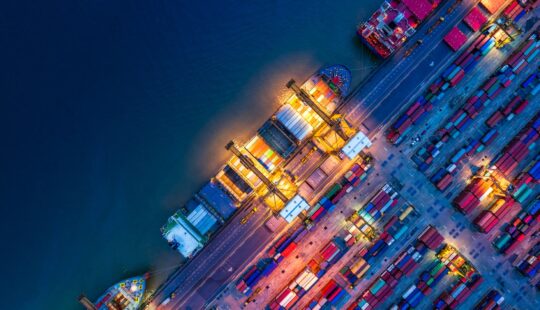It can feel like bad news is the driver to draw attention to supply chains: a ship blocking the Suez Canal, delayed delivery of products or materials to manufacture products due to the pandemic. Added to that, shortages for semiconductor chips have put the squeeze on automobile companies that have been using just-in-time manufacturing, the go-to model for lowering manufacturing costs for the past 50 years, another lingering supply chain story line.
That said, supply chain topics are consistently top of mind among business leaders, and the emphasis on its strategic role was only heightened in the past year. The recently published 2021 Business Leaders Outlook Pulse Survey by JPMorgan Chase surveyed 1,375 senior executives from midsize U.S. companies with annual revenue between $20 million and $500 million in June 2021. Their findings echoed what customers have been telling us.
Several elements in the survey stood out to me:
- Resiliency is one of the top three themes: “Nearly two-thirds of respondents say they added new product/service lines in response to the pandemic that they’ll keep afterward. Most say they’ll keep pandemic-era supply chain strategies, too.”
- Among respondents, 62% anticipate further supply chain issues in the coming year.
- While 51% have automated back-office functions with new digital platforms, 45% have not done this yet.
- Though 49% have managed some areas of their supply chain remotely, 34% have not.
- A mere 23% have adjusted last mile delivery strategies; a remarkable 71% have not.
Rounding out that picture, an IDC Info Snapshot sponsored by SAP, “Business Reimagined: Driving Efficiency and Resiliency,” gained similar results. IDC noted:
“The harsh reality that minor and major disruptions require frequent pivoting by the business to address new demand shifts and supply chain challenges. Midsize companies are also likely to have more chain links in the global supply chain than their enterprise counterparts… Each additional link introduces more potential points for supply chain disruption. Visibility into the whole supply chain has never been more critical to business agility and growth.”
Even before COVID-19, Oxford Economics noted:
“Companies with stronger strategies for customer-centricity, visibility, sustainability, and the application of intelligent technologies are seeing results from their efforts in terms of supply chain effectiveness, resiliency, and overall financial performance. And while all supply chains are vulnerable to risks in a global economy, execution on clear strategic objectives—supported by the correct tools and tactics to mitigate risk and minimize complexity—will make such events more manageable.”
As disruptions continue to rattle businesses and industries, it’s clear that a lot of companies have yet to seize the opportunity to utilize modern digital technology and build resiliency into their supply chains. With business leaders’ expectations that additional supply chain disruptions await in the coming year, the time is ripe for companies to digitalize their supply chain capabilities, improving visibility and planning functions that could readily lower the likelihood of disruptions.
Franz Hero is head of SAP Digital Supply Chain Development.



